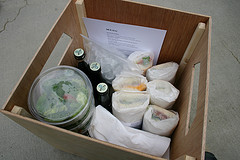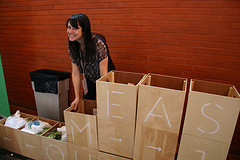via Discover Your Twitter Character on Visual.ly | Visual.ly.
Leadership Learning Nonprofit Leadership Webinar Series
The Leadership Learning Community, a group of people dedicated to the practice and learning around non profit leadership, host a series of webinars. August 23rd they have June Holley and I’m up October 10th. Here are the deets…
Presenter: Nancy White, Full Circle Associates
Topic: Communities, Networks and Engagement: Finding a Place for Action
Date: Monday, October 10th 11:00AM-12 Noon PDT 2:00PM-3:00PM EDTWe have so many online tools at our disposal to theoretically connect and activate engagement with others. But what happens when we say “were building an online community” but few engage? When is it worth the work and effort? What are our options? And if we build it, what are some starting points to help us work towards successful engagement? Join us as we explore our options and practices with Nancy White of Full Circle Associates. Nancy has been engaging in and facilitating online groups since 1996 – with her fair share of successes and failures.
Registration here.
via Nonprofit Leadership Webinar Series | Leadership Learning Community.
Monday Video: What is (A) Community?
Essential Arts – Blog – What is a Community?.
What is a Community? from Essential Arts on Vimeo.
Here are some visions of New Orleans and Seattle, plus a critical question that Essential Arts is addressing through our program Bilocal, which also pairs NOLA and Seattle writers and artists. Support us this month via Kickstarter!. (Nancy’s note – I never posted this till months later. Sorry!)
Monday Video: Conformity
Via Howard Rheingold, Face the Rear: An Illustration of Social Influence rings true like a bell. I love playing with “elevator etiquette” by not standing the way the group is. Last month at eLearning Africa in Dar es Salaam, our hotel had one elevator out, and tons of people moving in and out of their rooms on the same schedule. Yup, crowded elevators. I was on the 7th floor of my 13 floor hotel and each morning as I sought to descend, the door would open showing me a packed elevator. Overpacked according to standards here at home. Body to body. But everyone seemed quite comfortable, if hot. But I had to switch my tactics (because the lights were burnt out on the stairs, so that was a tricky option as well.) I hit the up button, got on as the car was going up in the morning and rode down 13 to 1 on the ever filling car. In the back. In the corner. Watching — you guessed it — how people behaved. How they accommodated a suitcase. What Africans did vs colleagues from Europe or North America. So when I saw this video, I was hooked. Watch the video. Then one more comment at the end…
When I think of group dynamics both face to face and online, there is this dynamic of conformity. It is stronger in some cultural contexts and in my experience, stronger F2F. But it also exists online — despite all the talk that people act with less inhibitions online. Some people do. Not everyone. 😉
And for my US friends, Happy Fourth of July!
Brilliant Conference Lunch Idea
This is brilliant from TEDX Edmonton. Green. Social. Creative. I’m going to steal- um- borrow this idea! Thanks for blogging about it, Mack Male!
Lunch was next on the schedule and as with the rest of TEDxEdmonton it was anything but ordinary. Instead of individual lunches, groups of five or six people were given a wooden box filled with sandwiches, salads, drinks, and treats and were encouraged to eat together. Most groups ended up outside where the sun was shining and the streets were packed for the Edmonton Pride Parade. It was great to see discussions happening all over the place. Kudos to Elm Café andDuchess Bake Shop for the delicious food and the creative presentation!
via Recap: TEDxEdmonton 2011 – MasterMaq’s Blog.
Photos from MasterMaq on Flickr.

